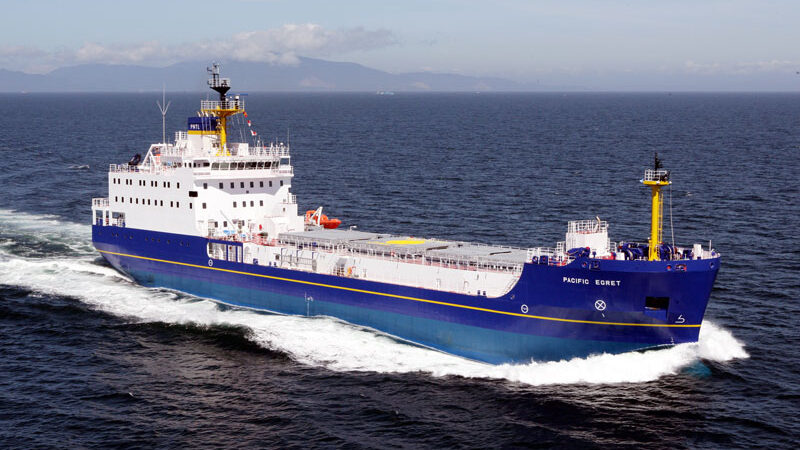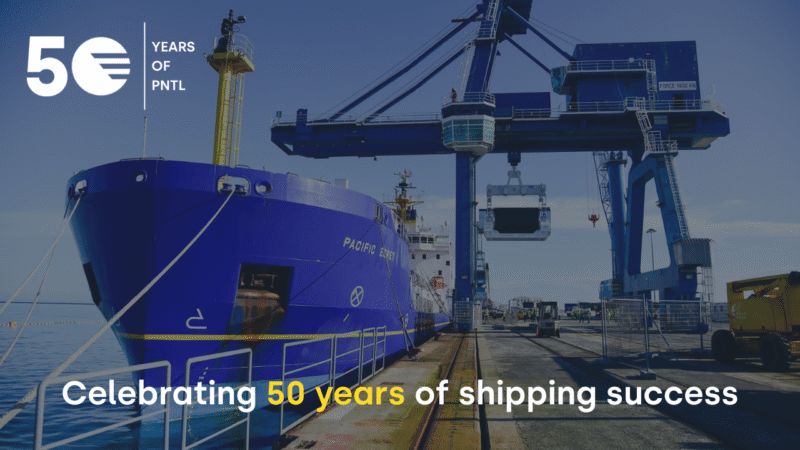Nuclear waste cargo ship gets ultimate recycling treatment
After 25 years and 1.2 million miles of safe service, the nuclear waste cargo vessel, Pacific Sandpiper, is being towed from its home port of Barrow-in-Furness to Europe for recycling today.
Pacific Nuclear Transport Ltd (PNTL), which is a subsidiary of International Nuclear Services (INS), owns the vessel. Pacific Sandpiper has travelled 1.2 million miles and transported 500 flasks of used nuclear fuel and highly radioactive nuclear waste between Europe and Japan, all without any incident involving the release of radioactivity.
The vessel also led the global public information programme for PNTL, which included a trip to Cape Town and Durban, South Africa, in 1998 where members of the public and dignitaries were welcomed on board to tour the vessel and learn more about the world-leading safety standards of all PNTL vessels.
Also during its service the Pacific Sandpiper had a night-time encounter with a tsunami in deep water off the coast of Japan in the mid-1990s.
The Pacific Sandpiper, which has been certified to be free of any radiological contamination, will now be towed to Holland for deep cleaning to remove any contaminants such as oils, before being towed onwards to Belgium to be broken up. The process represents a best practice example of ship decommissioning, which will see 95% of the vessel recycled. This process, which will take several months, has also been applied in recent years to the Pacific Teal, European Shearwater, Pacific Crane and Pacific Swan.
Captain David Hadfield, who has served on the Pacific Sandpiper many times, said: “PNTL vessels are among the safest in the world which is demonstrated by their consistent performance during more than 30 years of operations, which includes experiencing some very tough sea conditions.
“When you’ve spent so much time on a vessel as good as this, there’s always a tinge of sadness when it reaches the end of its operating life and this occasion is no different.
“And with the recycling process we’ve tried to maximise the impact of the vessel in the community by donating as much redundant equipment as possible to the likes of Barrow Sea Cadets and the national lifeboat service of France.
“What’s also great news is that we now have operating out of Barrow a fully replenished fleet of vessels based on the same excellent design standard of Pacific Sandpiper, in the form of the Pacific Grebe, Pacific Heron and Pacific Egret.”
Part of the preparations for recycling the vessel have included donating equipment with a replacement value of more than £50,000 to community groups and maritime organisations in Barrow-in-Furness and Cherbourg, which has been a frequent port of call in Pacific Sandpiper’s lifetime. This includes donating a lifeboat to the Société Nationale de Sauvetage en Mer (SNSM), France’s lifeboat service station in Brehal, near Cherbourg,
Capt. Hadfield was serving as second officer on the Pacific Sandpiper when it encountered a tsunami and it happened at night on his watch.
“When Pacific Sandpiper encountered this tsunami, for about a minute we felt an unusual movement of the vessel, as if the propeller was damaged. Then things quickly returned to normal and after routine checks, we continued on our way.
“The experience of this incident, as well as the information available from the maritime industry in Japan following the Tokai tsunami, provides us with reassurance that our vessels would perform well in credible worst case scenarios.
“For example, we know that three ships of a similar size to PNTL vessels managed to put to sea in a matter of minutes in order to face the incoming tsunami. One sustained minor damage but they all reached the safety of the open sea.
“Of course, we will learn any further lessons that emerge from analysing the maritime consequences of that event.”
ENDS
For more details, please contact Ben Todd at INS:
T: 01925 832655
M: 07738 039640
E: [email protected]

